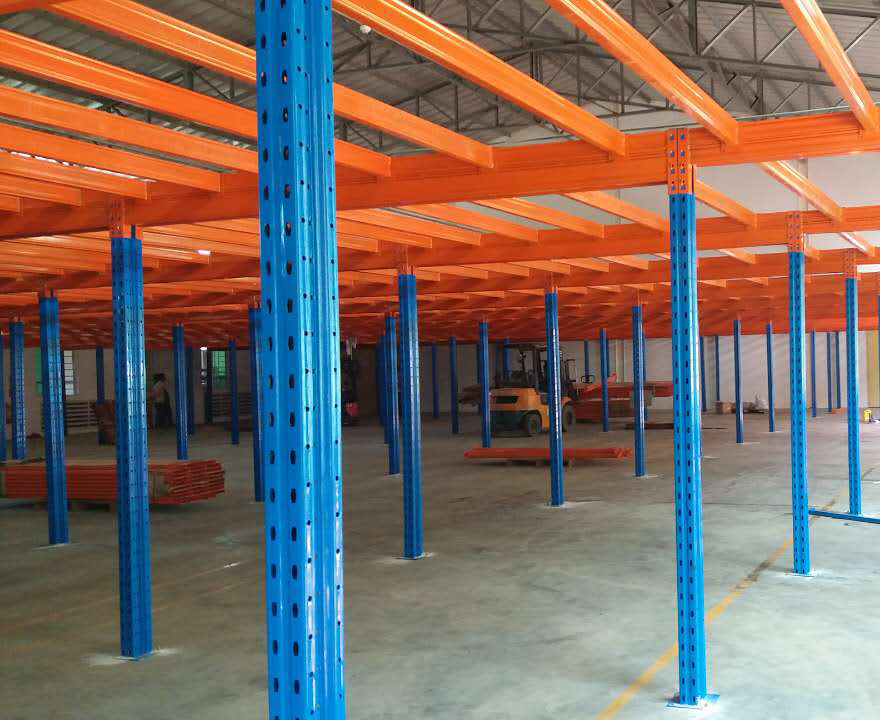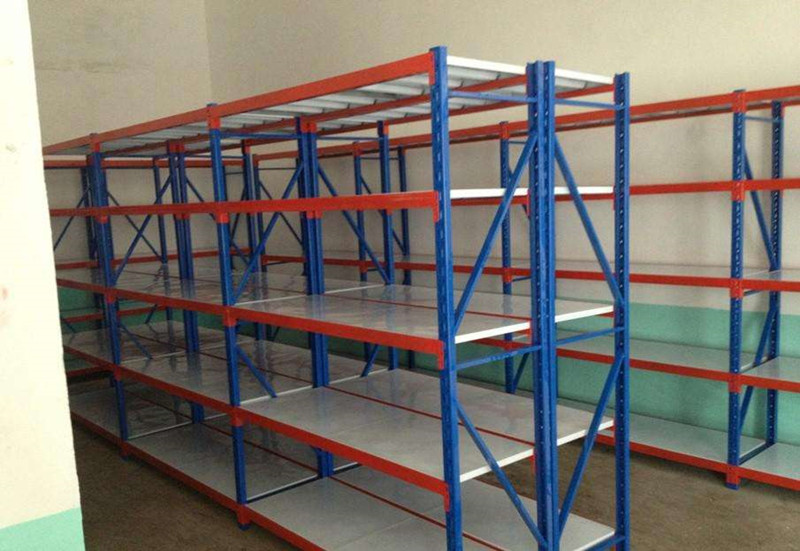In the relentless pursuit of efficiency and space optimization within warehouses, distribution centers, manufacturing plants, and even retail backrooms, the storage racking system stands as an indispensable backbone. Far more than just metal shelves, these engineered structures are sophisticated solutions designed to maximize vertical space, enhance inventory accessibility, improve organization, and bolster operational safety. Choosing and implementing the right storage racking system is a critical strategic decision impacting everything from daily workflows to the bottom line. This comprehensive guide delves into five essential aspects of storage racking systems, empowering you to make informed choices for your unique storage challenges.

1. Defining the Storage Racking System: Core Components and Purpose
At its core, a storage racking system is a structured framework, typically constructed from high-strength steel, designed to support and organize stored goods, primarily on pallets or in bins, in a systematic and accessible manner. Its primary purpose is to transform unused vertical cube space into usable storage capacity, significantly increasing the density and efficiency of a facility compared to floor stacking.
Key components of a typical pallet storage racking system include:
Uprights/Frames: Vertical columns forming the main support structure. They feature punched holes or slots for adjustable beam levels.
Beams: Horizontal members that connect between uprights, creating the shelves upon which pallets or loads rest.
Braces: Diagonal or horizontal cross members that provide lateral stability and rigidity to the frames.
Beam Connectors: Hardware (like teardrop or bolt-together systems) that securely attach beams to uprights.
Load Supports: Additional components like wire decking, pallet supports, or timber decking that provide a surface for smaller items or ensure pallet stability.
Row Spacers & Shims: Used to align rows and ensure proper spacing and stability.
Guards & Protectors: Column guards, end-of-aisle protectors, and rack guards shield the system from damage caused by material handling equipment.
The fundamental principle behind any storage racking system is to safely bear the weight of stored goods while providing designated locations for every SKU, enabling systematic putaway, picking, and inventory control. A well-designed system turns chaotic storage into a streamlined, high-performance operation.
2. Exploring Common Types of Storage Racking Systems
No single storage racking system fits every need. The diversity of inventory profiles, turnover rates (FIFO vs. LIFO), space constraints, and handling equipment necessitates various specialized designs. Here are the most prevalent types:
Selective Pallet Racking: The most widely used storage racking system. Offers direct access to every pallet location via wide aisles, typically requiring counterbalance or reach trucks. Ideal for operations needing immediate access to a large variety of SKUs. Provides excellent selectivity (100%) but lower storage density.
Drive-In/Drive-Thru Racking: A high-density storage racking system where forklifts drive directly into the rack structure to place or retrieve pallets. Drive-In has entry from one end only (LIFO), while Drive-Thru allows access from both ends (FIFO possible). Excellent for storing large quantities of similar products but offers lower selectivity. Requires specialized, highly skilled forklift operators.
Push Back Racking: A dynamic, high-density system utilizing carts on inclined rails within each row. Pallets are loaded from the front, pushing the previous pallet back. Retrieval is LIFO; when the front pallet is removed, the next one rolls forward. Offers good density (typically 3-6 pallets deep) with better selectivity than drive-in systems.
Pallet Flow Racking: A FIFO (First-In, First-Out) high-density storage racking system. Pallets are loaded on a slight incline at the loading end and move via gravity rollers or wheels to the picking end. Ideal for high-throughput operations with perishable goods or items requiring strict rotation. Requires specialized lane construction.
Cantilever Racking: Designed for long, bulky, or irregularly shaped items that cannot be palletized easily (e.g., lumber, pipes, furniture, rolls). Features vertical columns with horizontal arms extending outwards. Offers excellent accessibility for long loads without front column obstructions.
Mobile Pallet Racking (Mobile Aisle): Entire rows of racking are mounted on motorized bases that move laterally on rails embedded in the floor. Creates temporary aisles only where needed, maximizing floor space utilization (often achieving near 80% storage density). Ideal for cold storage or archives where space is extremely expensive. Requires safety systems like aisle lights and motion detectors.
Mezzanine Flooring with Integrated Racking: Combines elevated work platforms (mezzanines) with integrated racking systems below, above, or around the platform. Effectively doubles or triples usable floor space within the same building footprint. A versatile storage racking system solution for multi-purpose facilities.

3. Key Benefits of Implementing a Robust Storage Racking System
Investing in a well-planned storage racking system delivers substantial, tangible advantages:
Maximized Space Utilization & Storage Density: The most obvious benefit. By leveraging vertical space often left unused, a storage racking system dramatically increases storage capacity within the existing building footprint. High-density systems like drive-in, push back, or mobile racking further amplify this benefit, delaying costly facility expansions.
Enhanced Inventory Accessibility and Organization: Goods are stored in designated, easily identifiable locations. This systematic organization drastically reduces search times, minimizes misplacement, and streamlines both putaway and picking processes. Selective racking ensures every pallet is immediately accessible.
Improved Operational Efficiency & Productivity: Easy access and organized storage translate directly into faster order fulfillment, quicker cycle times, and reduced labor costs. Forklift operators spend less time navigating and searching, focusing more on productive movement of goods. Efficient workflows are enabled by a logical system layout.
Increased Safety: A professionally designed and installed storage racking system significantly enhances warehouse safety. Properly stored loads are less likely to fall. Clear aisles and designated storage zones reduce clutter and tripping hazards. Integrated safety features (guards, netting) protect both personnel and inventory. Adherence to load ratings prevents dangerous overloading.
Better Inventory Control & Accuracy: Organized storage facilitates easier and more accurate cycle counting and physical inventory audits. Combined with a Warehouse Management System (WMS), the storage racking system becomes a physical framework for precise inventory tracking and location management.
Scalability and Flexibility: Modern storage racking systems are modular. They can be easily reconfigured (beam levels adjusted), expanded, or even relocated as inventory profiles, volumes, or business needs evolve. This adaptability protects your investment long-term.
Protection of Goods: Keeping goods off the floor protects them from potential water damage, dirt, and pests. Features like wire mesh decking also improve ventilation.
4. Critical Factors in Selecting the Right Storage Racking System
Choosing the optimal storage racking system is not a one-size-fits-all decision. Careful analysis of numerous factors is essential:
Inventory Characteristics:
Size & Dimensions: Pallet size (standard, EUR), load dimensions (overhang?), weight per pallet, height of goods.
Weight: Crucial for determining required beam and upright capacities. Heavier loads demand stronger, often more expensive, racking.
Type of Goods: Fragile? Hazardous? Require ventilation? Long/bulky items? This influences rack type (e.g., cantilever for long loads) and accessories (decking).
Turnover Rate (SKU Velocity): Fast-moving SKUs benefit from easily accessible locations (e.g., selective racking near pick faces). Slow-movers can go into higher density storage. FIFO vs. LIFO requirements dictate flow or drive-in systems.
Material Handling Equipment (MHE): The type of forklifts (reach truck, counterbalance, turret truck, order picker), their lift height capabilities, mast size, turning radius, and fork dimensions directly determine the minimum aisle widths possible and the maximum practical height of the storage racking system. Narrow-aisle trucks enable very high-bay racking and VNAs (Very Narrow Aisles).
Facility Constraints & Layout:
Building Dimensions: Clear ceiling height, floor area, column locations and spacing, floor load capacity, door locations and sizes.
Existing Infrastructure: Location of sprinklers, lighting, HVAC ducts, fire exits. Racking must comply with local building and fire codes, often requiring specific clearances.
Budget Considerations: Costs include the racking structure itself, installation, necessary accessories (decking, guards), potential floor modifications, and any required new MHE. While upfront cost is important, consider the long-term ROI through space savings, efficiency gains, and reduced product damage. High-density systems often have a higher upfront cost but lower cost per pallet position.
Scalability & Future Needs: Anticipate growth in SKUs, volume, or changes in product mix. Choose a system that can be easily modified or expanded without complete replacement.
Safety Regulations: Compliance with local and national safety standards (e.g., OSHA in the US, SEMA in the UK) is non-negotiable. Ensure the design incorporates adequate safety factors, load signage, and protection.
5. Safety, Maintenance, and Best Practices for Storage Racking Systems
A storage racking system is a significant investment and a critical component of warehouse safety. Proactive management is vital:
Professional Design and Installation: Always engage qualified racking suppliers or structural engineers. The design must account for seismic loads (if applicable), load distributions, and meet all relevant standards. Installation must be performed by certified technicians to ensure structural integrity.
Regular Inspections: Implement a rigorous inspection program:
Daily/Operator Checks: Encourage operators to report any impacts immediately.
Weekly/Monthly Visual Checks: Supervisors or designated personnel should walk aisles looking for obvious damage, leaning frames, or overloaded beams.
Formal Annual Inspections: Conducted by a competent person (internal or external specialist) using a detailed checklist. Document all findings. SEMA (Storage Equipment Manufacturers' Association) guidelines provide a good framework.
Damage Protocol: Establish a clear "RED TAGGING" procedure. Any damaged component (bent upright, dented beam, missing connector, significant deflection) must be immediately reported, the affected area taken out of service (red-tagged), and repaired or replaced only using approved, manufacturer-supplied components by qualified personnel.
Load Management:
Never Exceed Ratings: Uprights and beams have strict Safe Working Load (SWL) or Uniformly Distributed Load (UDL) ratings. These must not be exceeded. Load signage should be clear at each bay.
Proper Placement: Pallets must be centered on beams, not overhanging excessively. Use pallet supports if necessary. Ensure loads are stable and secure.
Beam Level Loading: Loads should always rest directly on beams or proper decking, not on beam connectors.
Aisle Discipline: Maintain clear, unobstructed aisles at all times. Enforce speed limits for MHE. Use floor marking and signage effectively.
Protection: Install column guards, end-of-aisle protectors, rack guards, and pallet backstops strategically to minimize impact damage from MHE.
Training: Ensure all personnel (warehouse staff, forklift operators, managers) receive thorough training on the safe use of the storage racking system, including load limits, inspection basics, and damage reporting procedures.
Documentation: Maintain accurate as-built drawings, load capacity charts, inspection reports, and repair records for the entire storage racking system.
A well-chosen and meticulously managed storage racking system is far more than warehouse furniture; it is a powerful strategic asset. By maximizing space, enhancing accessibility, improving efficiency, and ensuring safety, the right system delivers a compelling return on investment. Understanding the different types available, their specific benefits and applications, and the critical factors involved in selection is paramount. Equally important is the commitment to ongoing safety through rigorous inspections, damage management, and operator training.
Investing the time and resources into properly planning, selecting, installing, and maintaining your storage racking system lays the foundation for a more organized, productive, and safe warehousing operation, capable of scaling efficiently to meet future demands. In the competitive world of logistics and supply chain, optimizing your storage infrastructure through a high-performance storage racking system is not just an option, it's a necessity for success.







